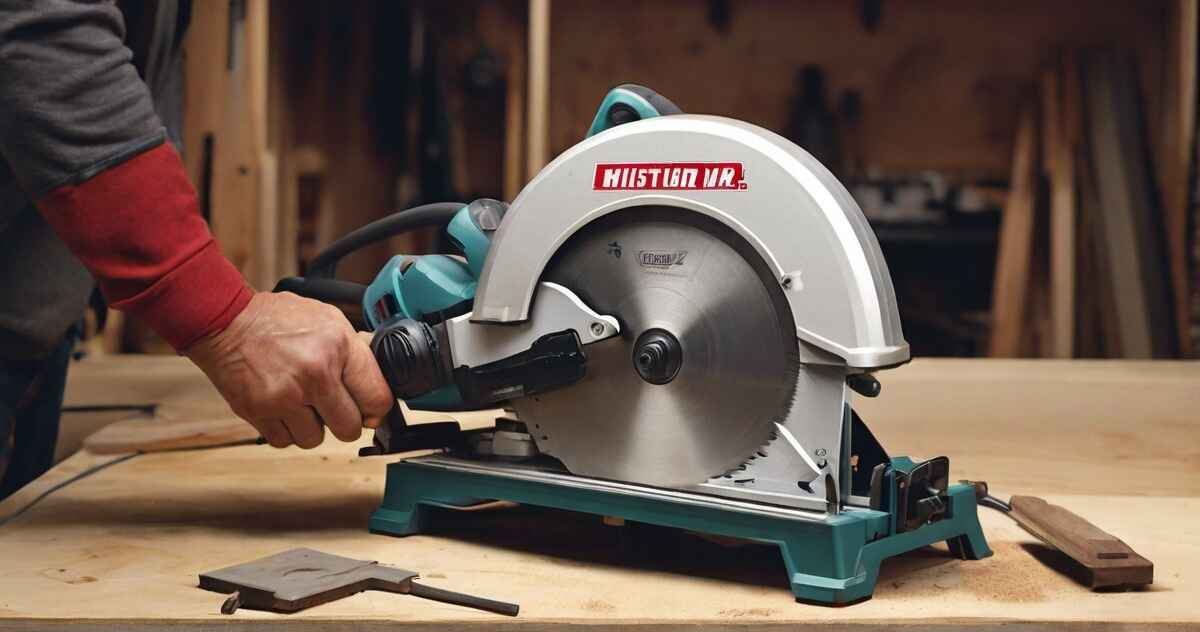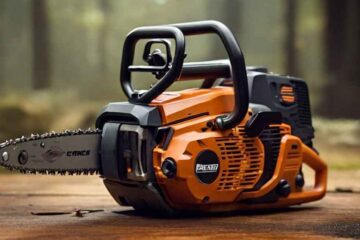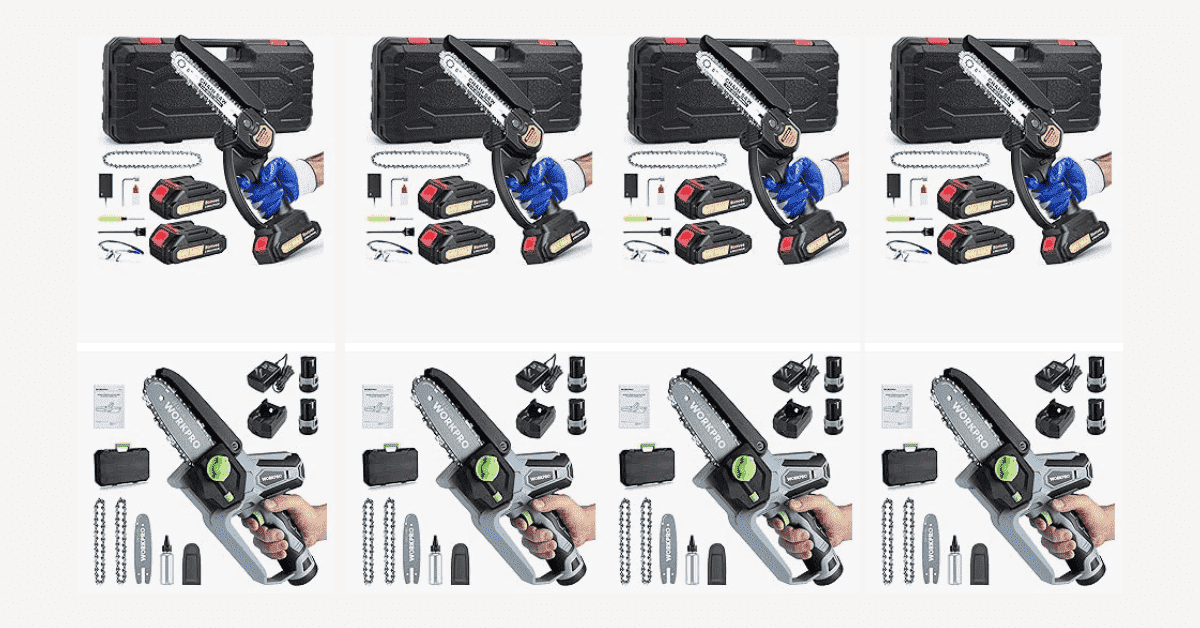Circular saws are a versatile and powerful tool used in woodworking. Its rotating blade cuts through various materials, making it a perfect DIY and professional tool.
Learning how to use a circular saw safely and effectively is so important. Mishandling this tool can lead to accidents and injuries. By learning the right techniques, you’ll improve your safety and accuracy.
To use a circular saw properly, you must understand its key components. These include the blade, motor, shoe, and depth adjustment lever. Knowing these parts will enable you to operate the saw effectively.
Safety
Safety Precautions to Follow When Using a Circular Saw
- Wear Protective Gear: Wear safety glasses and ear protection to ensure your safety.
- Use a Push Stick for Rip Cuts: Place a push stick between your hands and the blade to reduce kickback risk.
- Regular Maintenance: Follow the manufacturer’s instructions for regular maintenance. Check for loose bolts, ensure the blade is sharp, and lubricate moving parts.
How to Choose the Right Blade for the Material You Are Cutting
Selecting the right blade is crucial for achieving clean and efficient cuts. Consider the type of material you are cutting and choose a blade with the appropriate tooth count and design. Fine-tooth blades are suitable for plywood, while coarse blades work well for rough lumber. This step is integral to understanding how to use a circular saw as a table saw for various projects.
How to Set the Depth of the Cut
Adjusting the depth of the cut is essential for different materials. Set the depth slightly below the material’s thickness to ensure a clean cut. Avoid excessive blade exposure, as it minimizes the risk of accidents and enhances cutting precision.
Types of Cuts
Understanding the various types of cuts you can make with a circular saw is fundamental to using the tool effectively.
- Crosscut: Ideal for cutting across the wood grain, position the saw so that the blade is perpendicular to the material.
- Rip Cut: Suited for cutting along the wood grain, place the saw so that the blade is parallel to the grain of the wood.
- Bevel Cut: Adjust the angle of the saw’s base to achieve beveled edges. This cut adds a decorative touch to your projects.
- Plunge Cut: For creating openings in the middle of a piece, place the saw’s shoe on the material and slowly lower the blade into it.
How to Make Different Types of Cuts
- Crosscut: Position the blade perpendicular to the material being cut.
- Mark your cut line.
- Position the saw at the edge of the material.
- Hold the saw firmly and power it up before gently lowering it onto the material.
- Rip Cut: Place the saw so that the blade is parallel to the grain of the wood.
- Measure and mark the desired width on the material.
- Adjust the saw so that the blade aligns with the marked line.
- Keep a steady hand as you guide the saw along the grain.
- Bevel Cut: Adjust the angle of the saw’s base to the desired angle.
- Loosen the bevel adjustment lever and tilt the base to your preferred angle.
- Tighten the lever to secure the angle.
- Follow the same cutting process as the crosscut or rip cut.
- Plunge Cut: Place the saw’s shoe on the material and slowly lower the blade into the material.
- Mark the starting point of your plunge cut.
- Raise the blade of the saw above the material.
- Turn on the saw and lower the blade slowly into the material.
Tips for Using a Circular Saw Safely and Effectively
- Always wear appropriate safety gear.
- Light up the work area and keep it clear.
- Keep up with manufacturer’s instructions.
Troubleshooting Common Problems
Saw is Not Cutting Straight
Ensure the blade is sharp and correctly aligned. If the saw continues to veer off, check for any irregularities in the material. This tip is crucial for those mastering how to properly use a circular saw for precise cuts.
Saw is Bogging Down
This issue may arise from a dull blade or excessive feed pressure. Replace the blade if it’s dull and ease up on the pressure when cutting. Understanding these troubleshooting steps is valuable for those learning how to use a circular saw for beginners.
Saw is Kicking Back
Kickback can occur if the saw binds during the cut. Ensure the material is well-supported and free from obstructions. Maintain a firm grip on the saw to prevent it from jumping. If the blade binds, release the trigger immediately and back the saw out of the cut.
FAQ
- What are the Different Types of Circular Saws Available?
Circular saws come in various types, including sidewinder (or inline) saws and worm drive saws. Sidewinder saws are lighter and more compact, while worm drive saws offer more torque and are preferred for heavy-duty tasks.
- How do I Choose the Right Circular Saw for My Needs?
Consider the type of projects you’ll be undertaking and the materials you’ll be working with. Sidewinder saws are great for general use, while worm drive saws are better for heavy-duty applications.
- What are the Safety Features to Look for in a Circular Saw?
Look for saws with blade guards, anti-kickback features, and electric brakes. These features enhance safety by reducing the risk of accidents during operation.
- How do I Maintain My Circular Saw?
Regularly check and tighten all bolts, keep the blade sharp, and lubricate moving parts. Be sure to follow the manufacturer’s maintenance instructions. This is an essential part of knowing how to properly use a circular saw over time.
Conclusion
Mastering the circular saw, specifically how to use a circular saw, is a gateway to unlocking a world of possibilities in woodworking and DIY projects. By prioritizing safety, understanding different types of cuts, and troubleshooting common issues, you’ll become a circular saw pro in no time. This guide focuses on how to use a circular saw confidently and safely.
No matter your level of experience, these insights will help you




